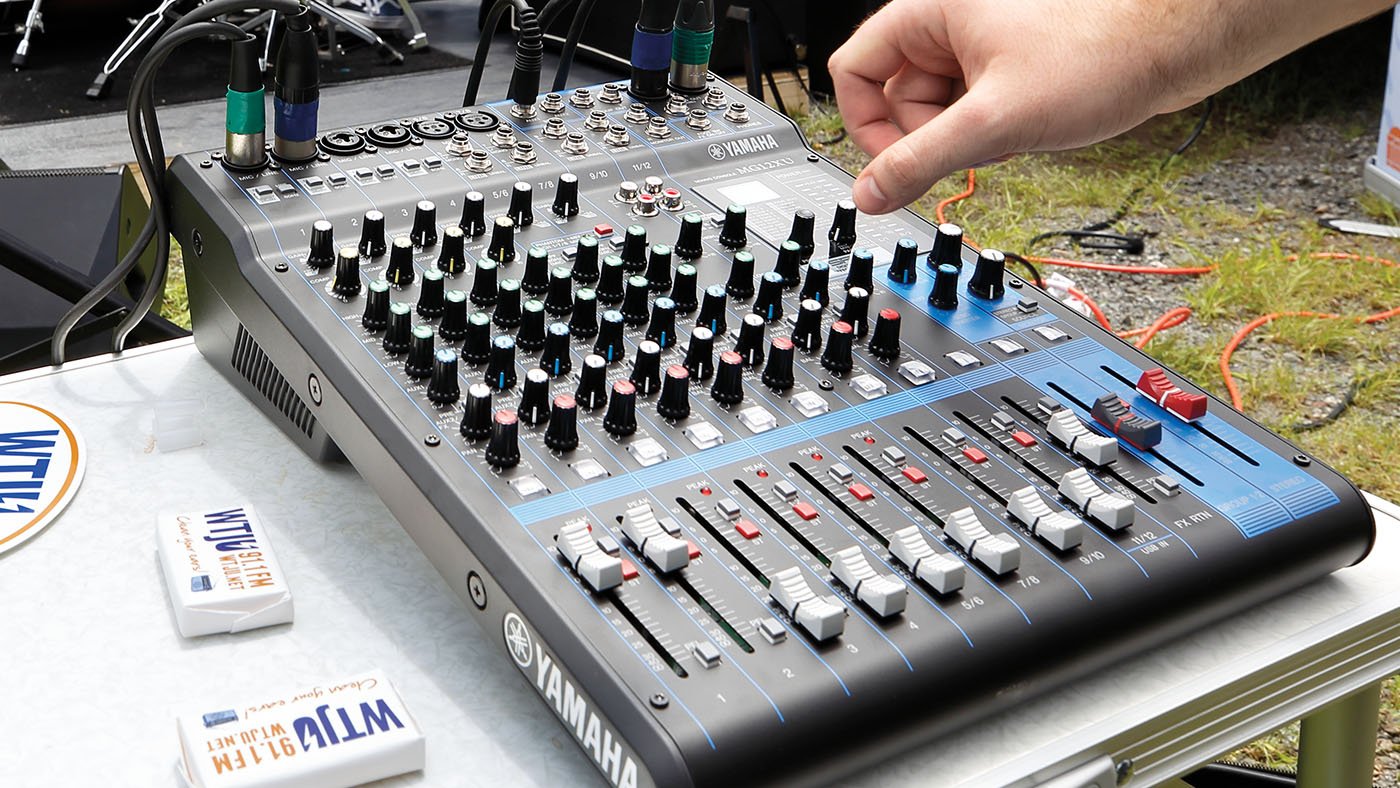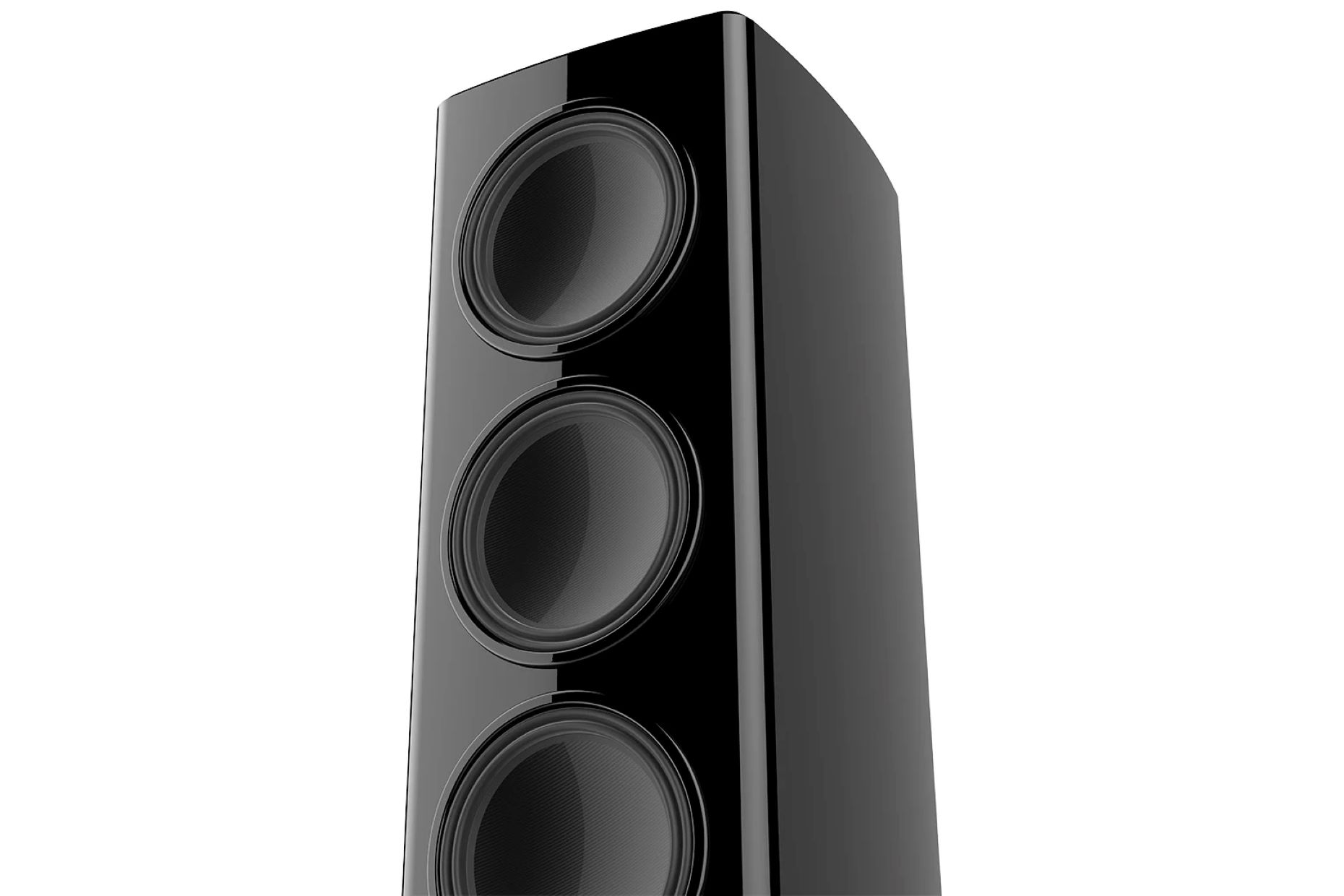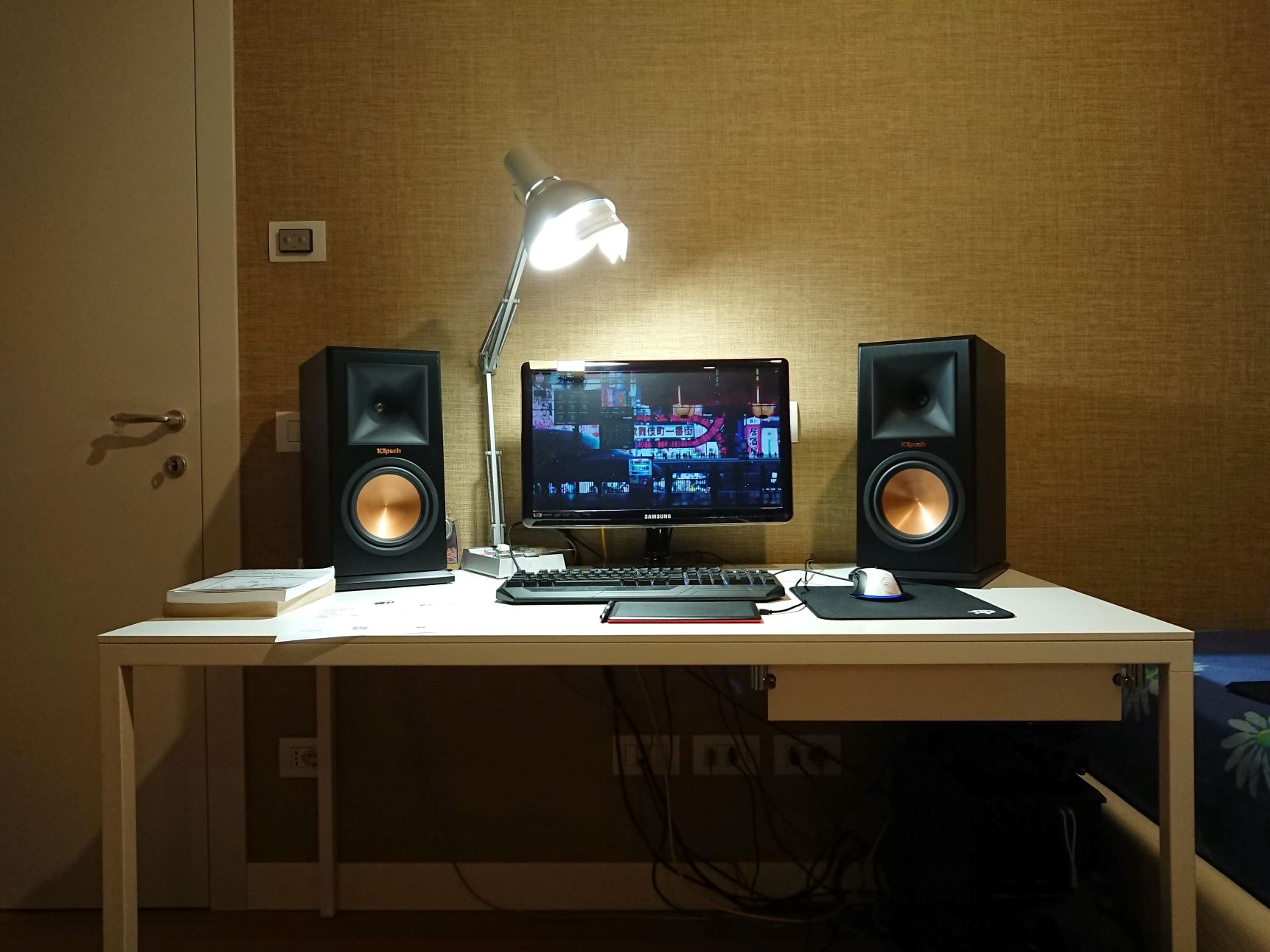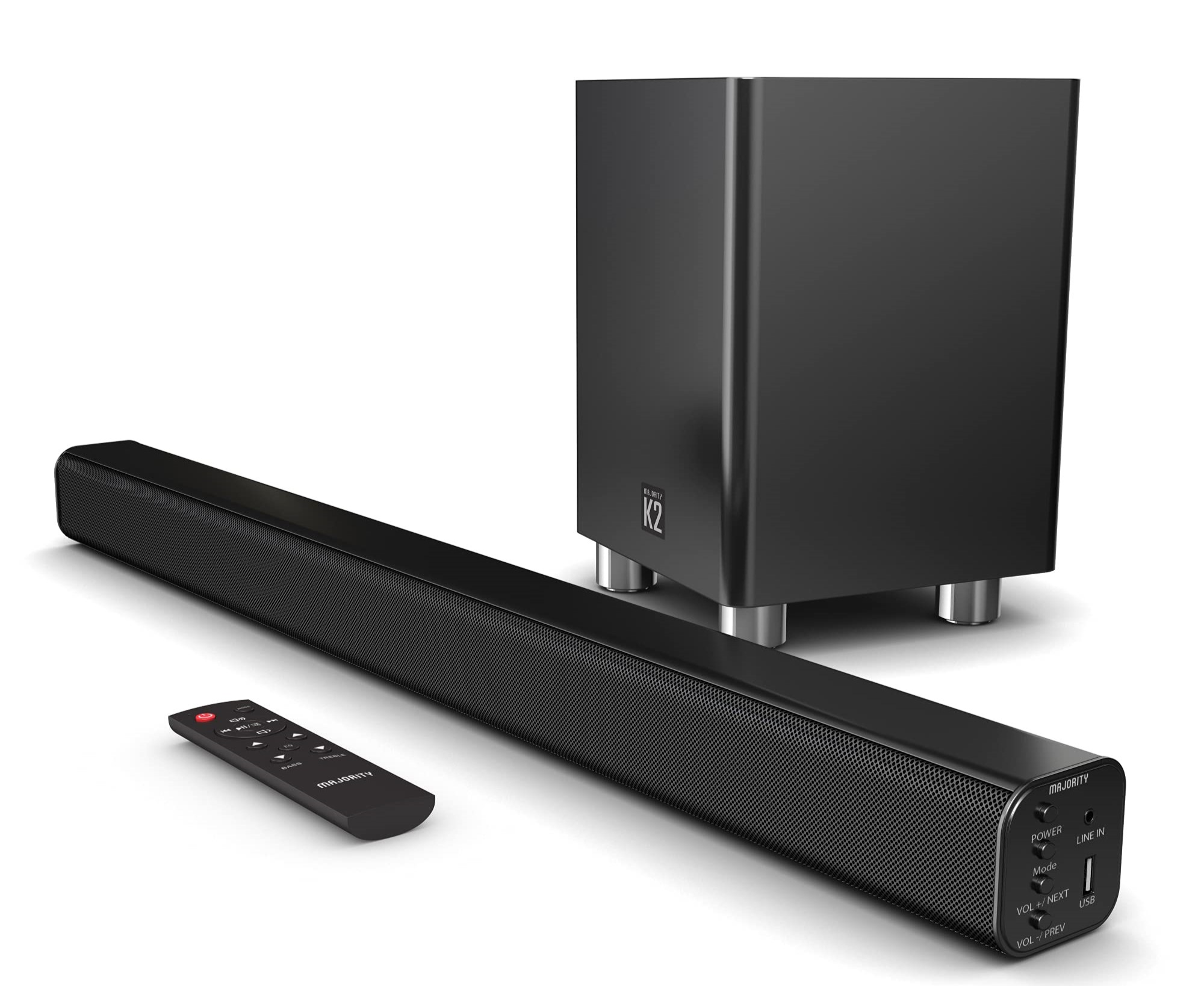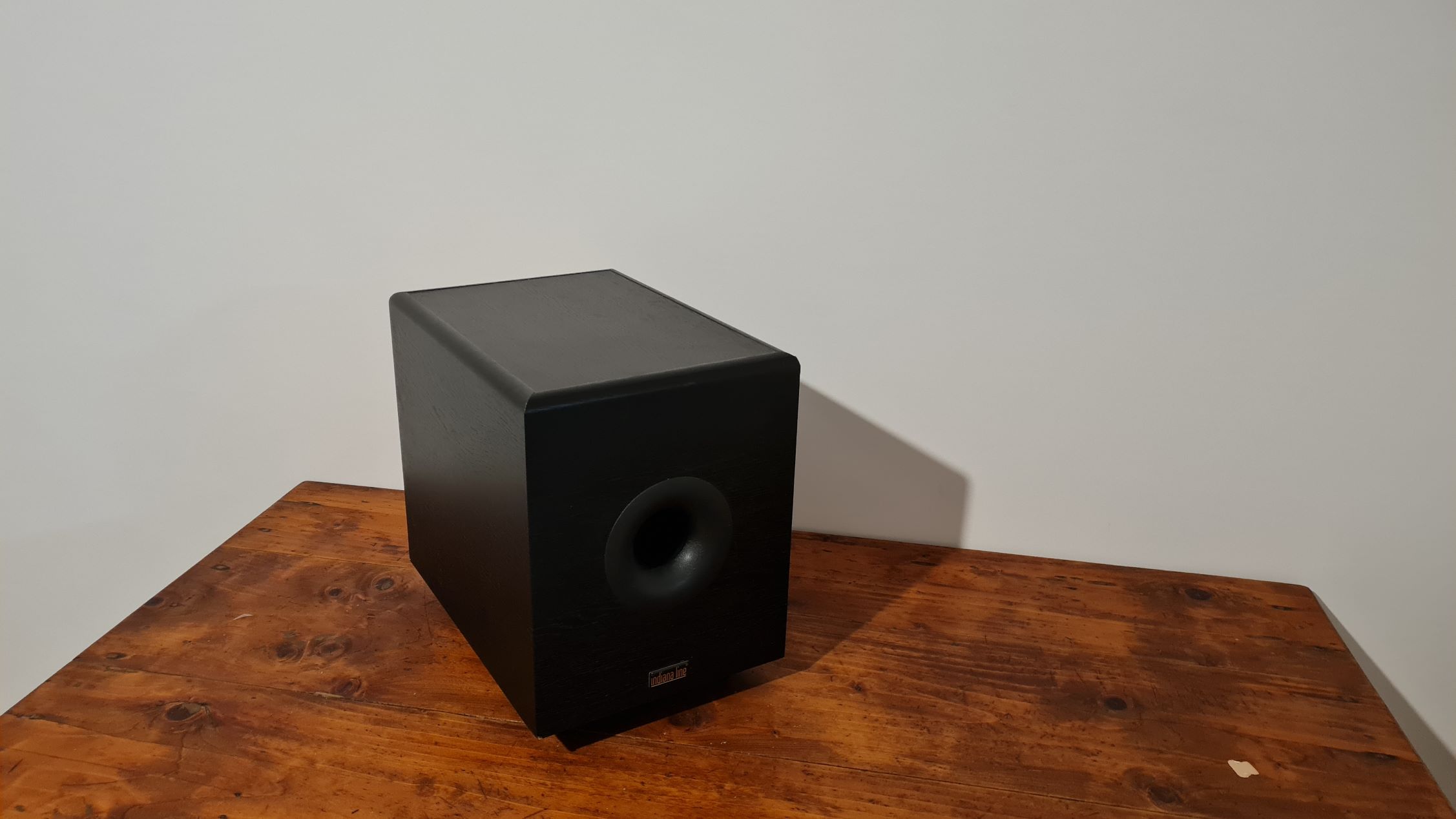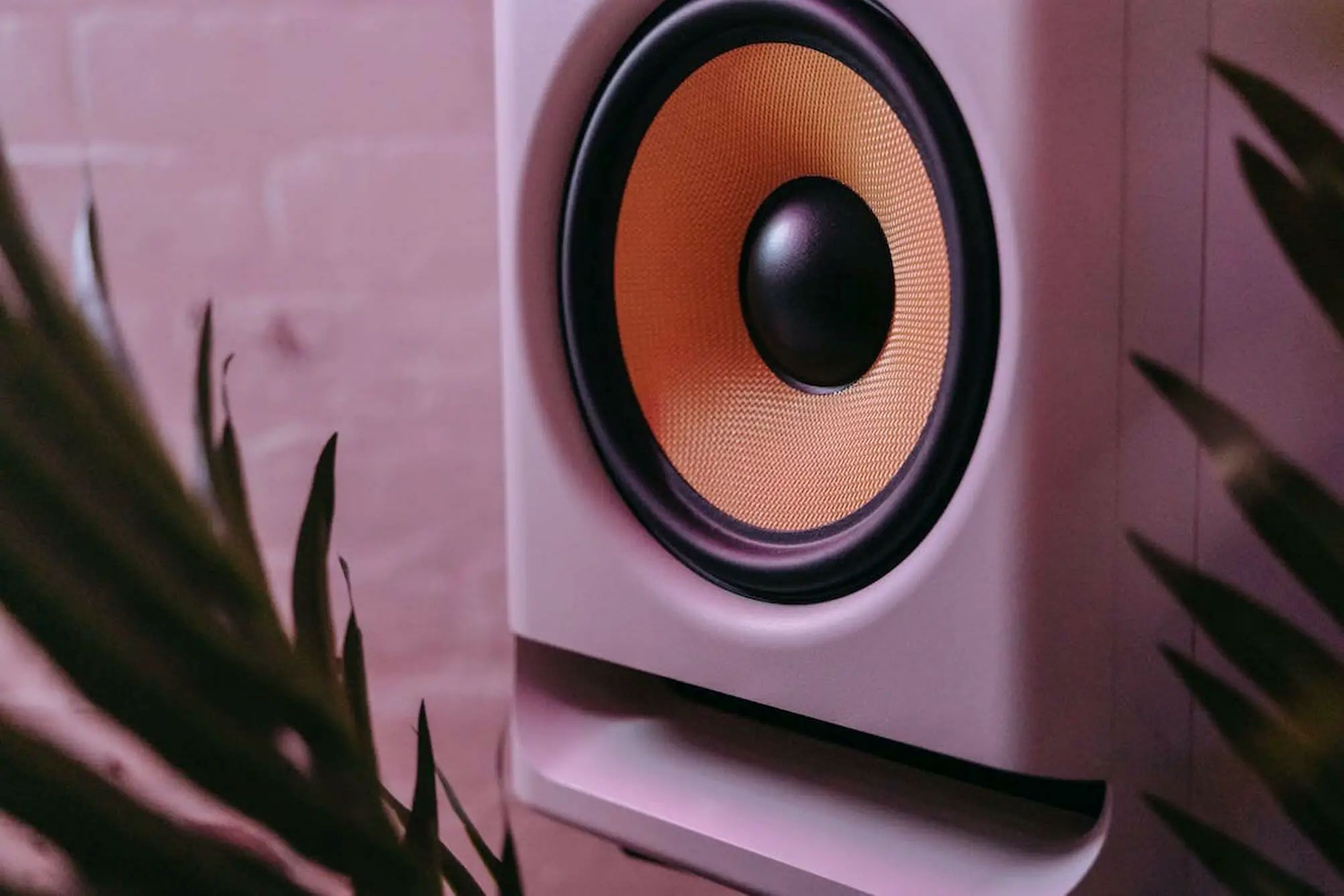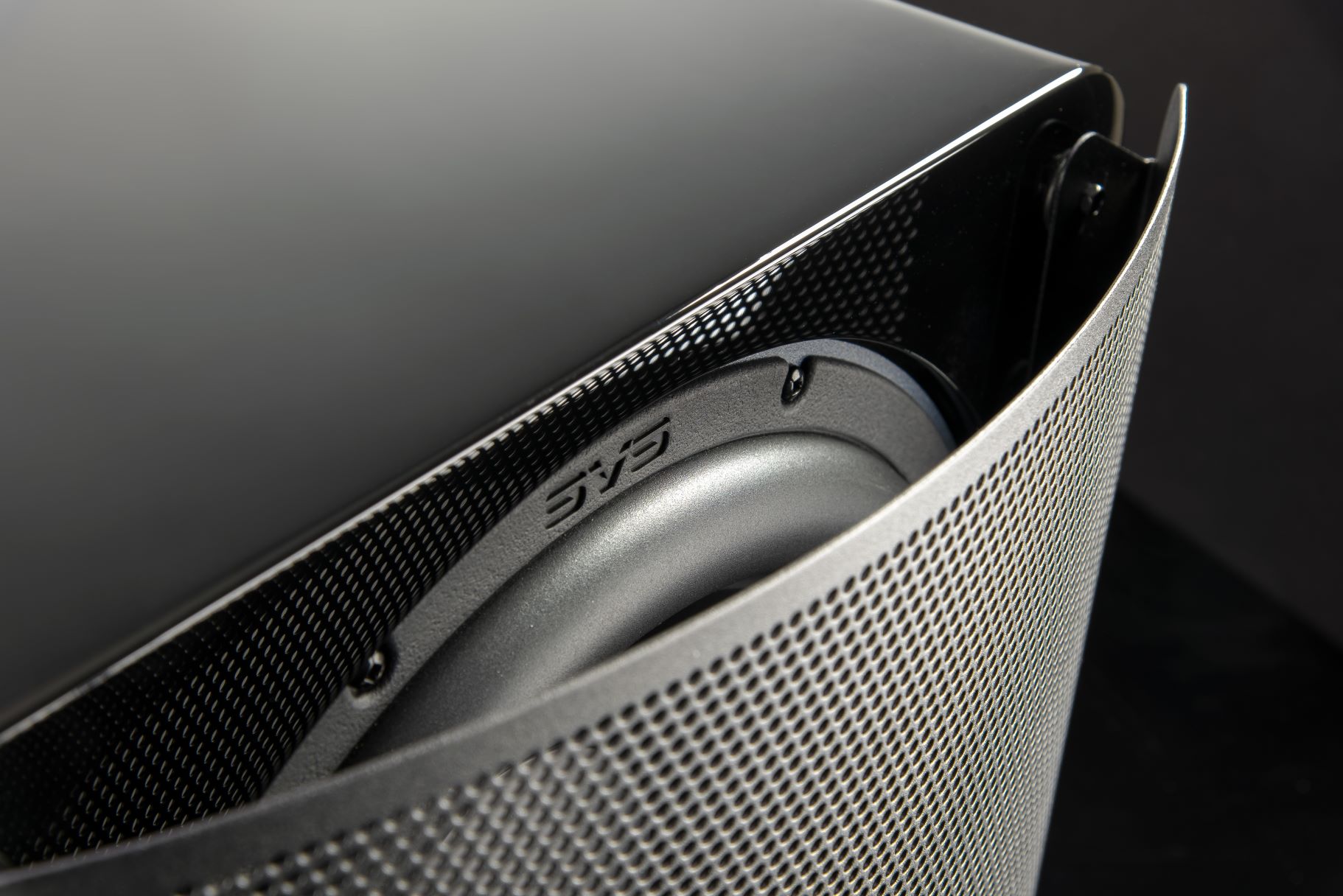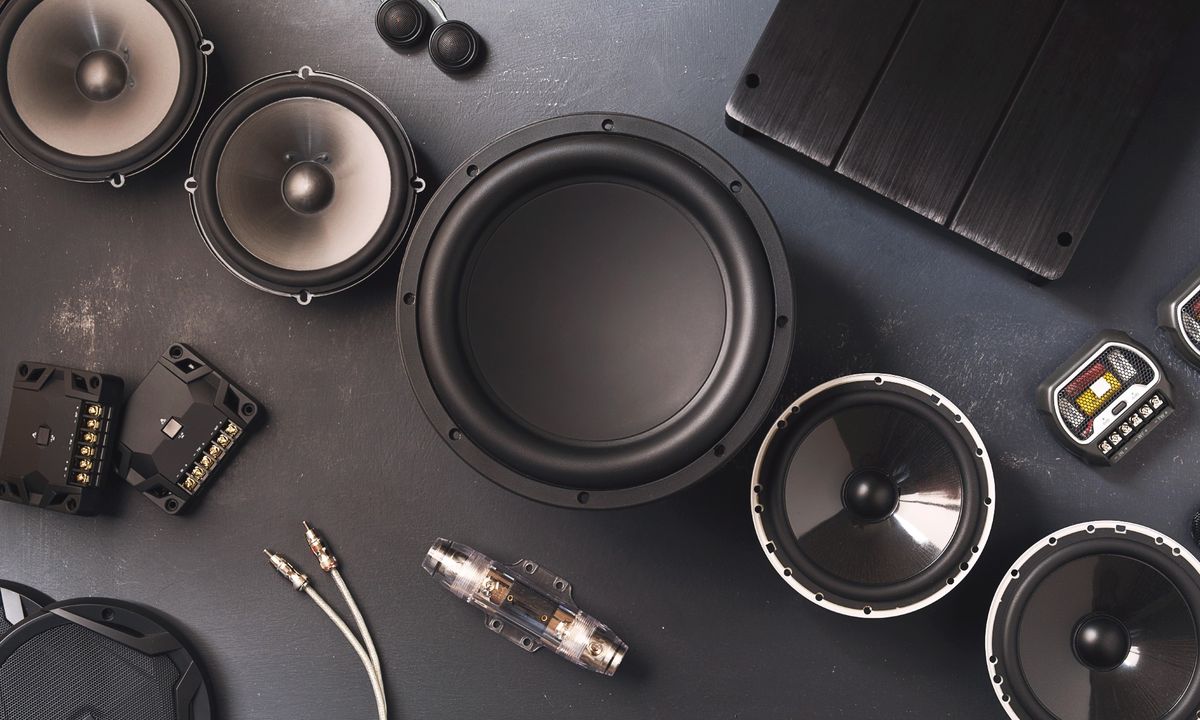Home>Devices & Equipment>Subwoofer>How To Connect EV Speakers To Subwoofer


Subwoofer
How To Connect EV Speakers To Subwoofer
Published: January 23, 2024
Learn how to properly connect EV speakers to your subwoofer for enhanced bass and audio experience. Expand the potential of your subwoofer with these useful tips and techniques.
(Many of the links in this article redirect to a specific reviewed product. Your purchase of these products through affiliate links helps to generate commission for AudioLover.com, at no extra cost. Learn more)
Table of Contents
Introduction
Welcome to the world of enhanced audio experiences! If you’re looking to take your sound system to the next level, adding a subwoofer to your setup can make a world of difference. A subwoofer is a specialized speaker designed to reproduce low-frequency sound, providing a deep and powerful bass response that can immersively enhance your music, movies, or gaming experiences.
In this article, we will delve into the fascinating world of connecting EV speakers to a subwoofer. EV speakers, also known as Electro-Voice speakers, are highly regarded for their exceptional sound quality and durability. When combined with a subwoofer, they can create a full, well-rounded audio system that delivers both crisp highs and earth-shaking lows.
Whether you’re a music enthusiast, a DJ, or a professional sound engineer, understanding how to connect EV speakers to a subwoofer is essential for optimizing your sound setup. This article will guide you through the process, step by step, ensuring a seamless integration that unleashes the true potential of your audio system.
Before we dive into the details, it’s important to note that the specific steps and connections may vary depending on the models and brands of your EV speakers and subwoofer. Consult the user manuals of your devices for any specific instructions that may differ from the general guidelines in this article.
So, let’s get started and unlock the incredible power and depth that EV speakers and subwoofers can bring to your audio setup. Get ready to feel the music like never before as we explore the art of connecting EV speakers to a subwoofer!
Understanding EV Speakers and Subwoofers
Before we embark on the journey of connecting EV speakers to a subwoofer, it’s important to have a solid understanding of these two components and how they work together to create an immersive audio experience.
EV speakers, manufactured by Electro-Voice, are renowned for their superior sound quality and reliability. They are designed to reproduce a wide range of frequencies accurately, providing crystal-clear mid-range and high-frequency response. EV speakers are often used in professional sound reinforcement systems and are highly regarded in the music industry for their exceptional performance.
On the other hand, a subwoofer is a specialized speaker that focuses on one specific frequency range – the low end. Subwoofers are designed to reproduce deep bass frequencies with exceptional precision and power. They add depth and impact to your audio, making you feel the rumble of explosions in movies or the thumping beats of your favorite songs.
When you connect EV speakers to a subwoofer, you create a full-range audio system that can reproduce the entire spectrum of frequencies, from the crisp highs to the thunderous lows. The EV speakers handle the mid-range and high-frequency sounds, while the subwoofer takes care of delivering the low-frequency content, providing a more comprehensive and immersive audio experience.
To properly connect EV speakers to a subwoofer, you’ll need to pay attention to factors such as speaker and subwoofer compatibility, proper cable connections, and adjusting the settings. We’ll explore these aspects in the following steps.
By understanding the unique capabilities of EV speakers and subwoofers, you can make informed decisions when it comes to choosing the right equipment and optimizing your sound system. Now that we have a clear understanding of these components, let’s move on to the practical steps of connecting EV speakers to a subwoofer.
Step 1: Checking Speaker and Subwoofer Compatibility
Before connecting your EV speakers to a subwoofer, it’s crucial to ensure their compatibility. This involves verifying if the impedance and power handling capabilities of both the speakers and the subwoofer align.
Impedance, measured in ohms, refers to the electrical resistance the speakers and subwoofer present to the audio signal. It’s essential to match the impedance ratings to avoid damaging the equipment or experiencing subpar sound quality. Ideally, the impedance ratings of the speakers and subwoofer should be the same or within a close range.
Power handling capacity is another crucial factor to consider. It refers to the maximum power output that the speakers and subwoofer can handle without distortion or damage. Ensure that the power handling capacity of your EV speakers is compatible with the output capabilities of the subwoofer. It’s advisable to have a subwoofer that can handle slightly higher power output than the speakers to prevent overpowering and potential damage.
Consult the user manuals of your EV speakers and subwoofer to find the impedance and power handling specifications. If you’re unsure about the compatibility, reach out to the manufacturer or an audio professional for guidance.
Additionally, you should consider the physical connections and placement options of the speakers and subwoofer. Check if both the EV speakers and the subwoofer have compatible audio input and output options, such as XLR, quarter-inch, or RCA connectors. This will ensure a seamless connection between the devices.
Furthermore, think about the placement of the subwoofer in relation to the EV speakers. Placing the subwoofer too far away from the speakers may result in an uneven sound distribution, while placing it too close may overpower the audio balance. Experiment with different placements to achieve optimal sound integration.
By carefully considering the compatibility of your EV speakers and subwoofer, you can ensure a harmonious and efficient connection. Once you’ve confirmed the compatibility, we can move on to the next step of physically connecting the devices.
Step 2: Connecting EV Speakers to Subwoofer
Now that you’ve confirmed the compatibility between your EV speakers and subwoofer, it’s time to establish the physical connections. Follow these steps to connect your EV speakers to the subwoofer:
1. Identify the audio input/output options: Check the back panel of your EV speakers and subwoofer to identify the available audio input and output options. Common connectors include XLR, quarter-inch, or RCA. Ensure that you have the appropriate cables for connecting the devices.
2. Connect the audio cables: Take the appropriate cables for your setup and connect one end to the audio output of your EV speakers. The specific output may be labeled as “Main Out” or “Full Range.” Then, connect the other end of the cable to the audio input on the subwoofer. This input is typically labeled as “Subwoofer In” or “Low Frequency In.”
3. Secure the cables: Ensure that the cables are securely plugged in on both the EV speakers and the subwoofer. Loose connections can result in sound distortion or intermittent audio.
4. Double-check the connections: Take a moment to double-check all the connections and ensure that the cables are properly seated in their respective input/output ports. This will help avoid any unnecessary troubleshooting later on.
5. Power on the devices: Once you’ve made the physical connections, power on your EV speakers and subwoofer. Check the power indicators to ensure that both devices are receiving power.
Congratulations! You’ve successfully connected your EV speakers to the subwoofer. It’s important to note that some subwoofers may have additional settings or controls for fine-tuning the audio output. Consult the user manual of your subwoofer for any specific instructions on adjusting these settings.
Now that the EV speakers and subwoofer are connected, we can move on to the next step of adjusting the settings to optimize the audio performance.
Step 3: Adjusting the Settings
With your EV speakers and subwoofer connected, it’s time to fine-tune the settings to ensure optimal audio performance. Follow these steps to adjust the settings:
1. Subwoofer volume control: Locate the volume control or knob on your subwoofer. Start by setting it to the halfway point or “neutral” position. This will serve as a baseline for further adjustments.
2. Audio source settings: Adjust the volume levels on your audio source, such as a mixer or amplifier, to an appropriate level. This will ensure that the audio signal is balanced and not excessively loud or soft.
3. Subwoofer crossover frequency: The crossover frequency determines the point at which the subwoofer will start reproducing bass frequencies. Consult the user manual of your subwoofer to find the recommended crossover frequency setting. Set it accordingly using the controls on the subwoofer. This will ensure a seamless transition between the EV speakers and the subwoofer.
4. Subwoofer phase adjustment: Some subwoofers have a phase adjustment feature that allows you to synchronize the audio signals between the EV speakers and the subwoofer. Experiment with the phase settings to find the best possible alignment. This will help eliminate any phase cancellation issues and ensure a cohesive audio output.
5. Fine-tuning the EQ: If your subwoofer has equalization (EQ) controls, you can further refine the sound by adjusting the bass response. Play some audio material with a strong bass presence and experiment with the EQ controls to find a balanced and pleasing sound.
Remember to make small adjustments and listen to the changes in the sound as you adjust the settings. Take note of how each adjustment affects the overall sound quality and make subtle tweaks until you achieve the desired result.
Once you’ve adjusted the settings to your satisfaction, it’s time to put your EV speakers and subwoofer setup to the test!
Step 4: Testing the Setup
Now that you have connected your EV speakers to the subwoofer and adjusted the settings, it’s time to put your setup to the test. Follow these steps to ensure everything is working as intended:
1. Select an audio source: Choose a familiar audio source, such as your favorite music track or a movie scene with impactful sound effects. This will help you gauge the performance of your EV speakers and subwoofer.
2. Start with lower volume levels: Begin by playing the audio at a lower volume level. This will allow you to assess the overall balance of the sound and ensure that the EV speakers and subwoofer are working together harmoniously.
3. Listen for balanced sound: Pay attention to the sound coming from the EV speakers and the subwoofer. Ideally, the EV speakers should deliver clear and precise mid-range and high-frequency sounds, while the subwoofer should produce deep, rich bass without overpowering the rest of the audio.
4. Adjust the volume gradually: Slowly increase the volume to a comfortable listening level. While doing so, ensure that the sound remains balanced and that the subwoofer seamlessly integrates with the EV speakers. Listen for any distortion, clipping, or unwanted vibrations, which may indicate an issue with your setup or settings.
5. Test different audio content: Try playing various types of audio content, such as music genres with different bass levels or movie scenes with varying sound effects. This will help you evaluate the performance of your subwoofer and EV speakers across a range of frequencies and audio dynamics.
6. Fine-tune if necessary: If you notice any imbalances or inconsistencies in the sound, consider making minor adjustments to the settings, such as the subwoofer volume, crossover frequency, or EQ. Tweaking these settings can help you achieve the desired audio balance and enhance your overall listening experience.
By testing your setup with different audio sources and gradually adjusting the volume, you can ensure that your EV speakers and subwoofer are performing optimally and delivering a captivating audio experience.
Remember, the optimal audio setup may vary depending on personal preferences and the characteristics of your EV speakers and subwoofer. Take the time to experiment and fine-tune the settings until you achieve the perfect blend of clarity, depth, and power.
Troubleshooting Common Issues
Occasionally, you may encounter some issues when connecting EV speakers to a subwoofer. Here are some common problems that you may encounter and some troubleshooting tips to help you resolve them:
1. No sound from the subwoofer: If you’re not hearing any sound coming from the subwoofer, check the following:
– Ensure that the subwoofer is powered on and connected to a power source.
– Verify that the audio cables are securely connected between the EV speakers and the subwoofer.
– Check the settings on the audio source and the subwoofer to ensure that the subwoofer volume is not muted or set to a very low level.
– Confirm that the audio source is playing audio content with sufficient bass frequencies.
2. Imbalanced sound: If you notice that the sound is imbalanced, with either too much bass or too little bass, consider the following troubleshooting steps:
– Adjust the subwoofer volume to achieve a balanced level of bass that complements the EV speakers.
– Verify that the crossover frequency on the subwoofer is set correctly to blend the bass frequencies smoothly with the EV speakers’ output.
– Experiment with the placement of the subwoofer and the EV speakers to find the optimal positioning for balanced sound distribution.
3. Distorted or muddy bass: If the bass sounds distorted or muddy, try the following troubleshooting steps:
– Check the EQ settings on the subwoofer, if available, and adjust them to fine-tune the bass response.
– Verify that the subwoofer and EV speakers have compatible impedance and power handling capabilities.
– Ensure that the audio cables used for the connection are of good quality and properly shielded to minimize interference.
4. Phase cancellation issues: Phase cancellation can occur when the audio signals from the EV speakers and subwoofer are out of sync, resulting in weakened bass response. To troubleshoot phase cancellation:
– Adjust the phase settings on the subwoofer to find the optimal alignment with the EV speakers.
– Experiment with inverting the phase of either the subwoofer or the EV speakers to see if it fixes the issue.
If you encounter any other issues or if the troubleshooting steps mentioned above do not resolve the problem, consult the user manuals of your EV speakers and subwoofer for further instructions. Additionally, reaching out to the manufacturer’s customer support or seeking advice from an audio professional can also help in resolving complex issues.
Remember, troubleshooting audio systems can be a trial-and-error process, so be patient and persistent in your efforts to achieve the best possible sound quality from your EV speakers and subwoofer.
Conclusion
Congratulations on successfully connecting your EV speakers to a subwoofer! By following the steps outlined in this article, you have unlocked the potential of your audio setup and taken it to the next level. The combination of EV speakers and a subwoofer allows for a more immersive and powerful audio experience, whether you’re enjoying music, movies, or gaming.
Throughout this guide, we covered the importance of checking speaker and subwoofer compatibility, the process of physically connecting the devices, adjusting the settings for optimal sound performance, and troubleshooting common issues that may arise.
Remember, every audio setup is unique, and fine-tuning the settings may require some experimentation and adjustments to satisfy your personal preferences. Take the time to familiarize yourself with your EV speakers and subwoofer, and don’t hesitate to consult the user manuals or seek professional advice if needed.
Now, sit back, relax, and enjoy the enhanced audio experience that your EV speakers and subwoofer setup brings. Feel the deep bass rumble, the crisp and clear mid-range tones, and the immersive sound that fills the room. Whether you’re hosting a party, engaging in a home theater experience, or composing your next musical masterpiece, your EV speakers and subwoofer will deliver the exceptional sound quality you desire.
As technology continues to advance, explore the possibilities of expanding your audio system by incorporating additional speakers, amplifiers, or other audio equipment. Continually educate yourself on best practices and stay up-to-date with the latest trends in the audio industry.
Thank you for joining us on this journey of connecting EV speakers to a subwoofer. We hope this guide has provided you with valuable insights and empowered you to create a remarkable audio setup. Get ready to immerse yourself in extraordinary sound experiences like never before!

